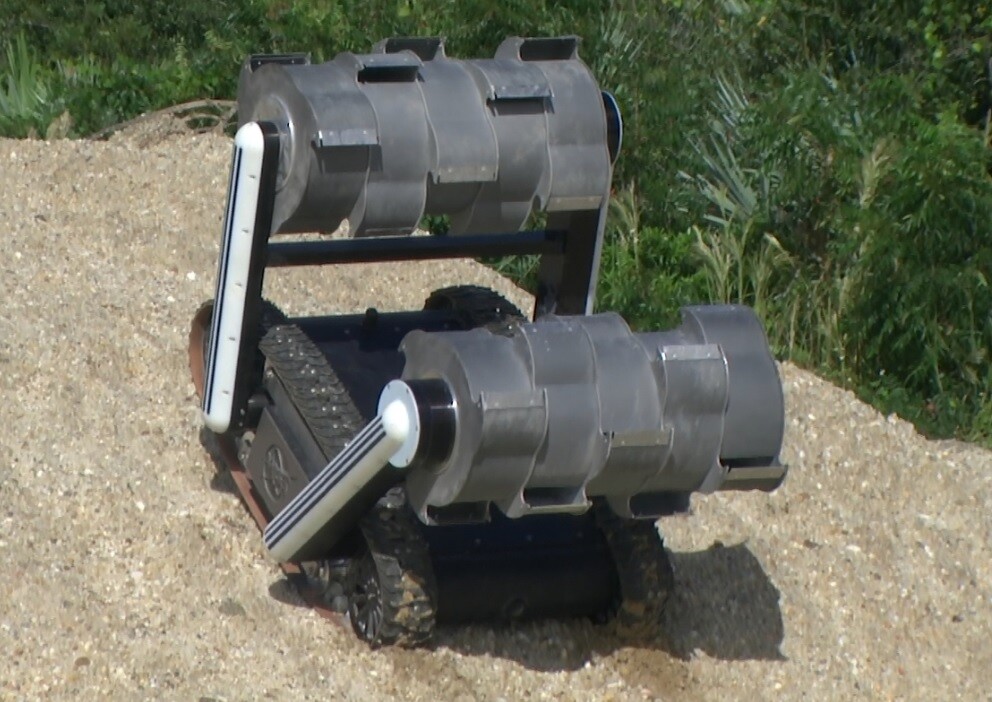A collection of autonomous robots designed to scuttle around on distant planets looking for resources and materials in much the same way that members of insect colonies do on Earth are currently being tested by NASA engineers. The robots, dubbed "swarmies," are designed to individually survey an area, signal the others when they have found something of value, and then divide up the task of collecting the material and returning it back to base.
Currently, four of these robots have been built, each of which is fitted with a webcam, a Wi-Fi system to communicate with each other, and a GPS unit. Whilst the test terrain is a little less alien than they one day may encounter – the swarmies are being deployed in an empty car park at Kennedy Space Center in Florida – the tests are meant only to prove that the software is functioning as it should and that the robots are operating as expected.
In the tests the robots are searching for barcoded pieces of paper. However, in the future similar robots deployed on an asteroid, the moon or Mars could continuously scan the surface for water, fuel resources or other commodities vital to an away mission.
"We’re entering the phase where we do a ton of trial runs and collect the data and that’s well ahead of schedule," says Cheryle Mako, an engineer at Kennedy who is leading the project. "From an investigation perspective, we are spot-on and have made great strides."
Even before one swarmie turns a single wheel in the name of space research, however, the engineers use a computer simulator to test their search and gather software to make sure that the algorithms do what they are supposed to. Similarly, the researchers can also simulate a much larger network of virtual robots without having to build a huge fleet of them to gauge their behavior.

Testing is designed to continue for quite some time and, as it does, other elements will be introduced into the program. To see how well the software translates to different robotic vehicles, the NASA-designed RASSOR experimental mining robot (pictured above) will join the tests. RASSOR (Regolith Advanced Surface Systems Operations Robot) is a concept robotic vehicle designed to trial different techniques for digging into the lunar or Martian surfaces and gather useful materials.
"Assuming this pays off, we know somebody’s going to take this and extend it and go beyond the four or five rovers we have here," said Kurt Leucht, a Kennedy Space Center engineer working on the project. "So as we design this and work it through, we’re mindful about things like minimizing bandwidth. I’m sure there will be a team whether it’s us or somebody else who will take this and advance it and scale it up."
In line with the current trend for swarming capabilities of UAVs and robots, NASA's swarmies also represent the new concepts being analyzed for potential space exploration applications. Namely, using a number of smaller units each with their own capabilities that, when combined, result in a cheaper and more powerful option than sending a single large vehicle.
The Mars Curiosity rover is a case in point – it is basically the size of a small car and is logistically heavy and difficult to get around. Robots such as swarmies and RASSOR are much smaller and built with only a few instruments and more specific purpose.
"For a while people were interested in putting as much smarts and capability as they could on their one robot," said Leucht. "Now people are realizing you can have much smaller, much simpler robots that can work together and achieve a task. One of them can roll over and die and it’s not the end of the mission because the others can still accomplish the task."
From a more mundane perspective, the NASA engineers also suggest that groups of swarmies may also be useful in pipeline and water main inspections on Earth, with their ability to quickly and safely inspect tight spaces and long tunnels. They may also be suitable for hazardous search and rescue tasks.
Source: NASA









